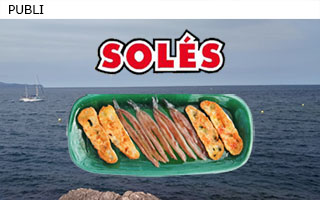The Rambla of Figueres & Narcís Monturiol
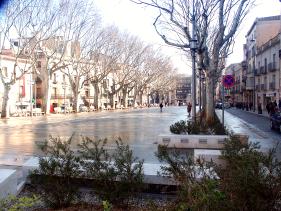
The Rambla (boulevard) of Figueres is the heart of the capital of the Alt Empordà, its emblematic centre, on which the city’s commercial world meets the leisure needs of the citizens. Banks and offices mix with sidewalk cafes and shops. Often, the centre of the Rambla is the scene for all formss of cultural meetings or “Fires” with relevant topics such as the wine fair in September. Also geographically the Rambla is truly the middle of the historical city centre of Figueres. Around the historic city centre there are another ring of districts, which originated from the 19th and 20th century as the city expanded in all directions.
Originally, the Rambla had been the site of a mill on a brook named Galligans. The inhabitants wanted to cover over the water for hygiene reasons. To do this the town expropriated the mill and buried the brook bed and redesigned the new surface as a public place. The Rambla was officially planned in the year 1828, and built from 1831 to 1840. In the year 1864 the 26 plane trees were planted, which still line the Rambla, today.
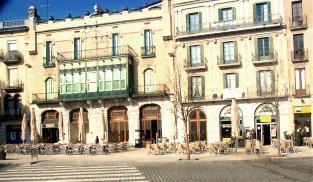 Starting from the end of the nineteenth century until the Spanish civil war the most beautiful buildings of the city were built. They connected themselves to already existing ones and formed, over time, a multicoloured melangn of diverse architectural styles, from the baroque to Neoclassicism or to art nouveau.
Starting from the end of the nineteenth century until the Spanish civil war the most beautiful buildings of the city were built. They connected themselves to already existing ones and formed, over time, a multicoloured melangn of diverse architectural styles, from the baroque to Neoclassicism or to art nouveau.
Its current form only dates back to 1917 when the architect Ricard Giralt revised the houses at the top and installed the monument by the sculptor Enric Casanova in honour of one of the favourite sons of the city, Narcis Monturiol.
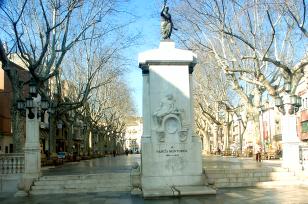 Monturiol (Figueres, 1819 – Barcelona, 1885) was lawyer who did not practice his profession. Instead, he spent his life as an artist and intellectual. He sympathised with the Republicans and was editor of La Fraternidad (1847-48) the first communist newspaper of Spain. Into the annals of Catalan Heroes he was especially recognized as the inventor of the submarine. Monturiol had observed the dangerous work of the coral divers during a stay in Cadaqués and had witnessed a deadly accident. This was his inspiration to think about navigation under water.
Monturiol (Figueres, 1819 – Barcelona, 1885) was lawyer who did not practice his profession. Instead, he spent his life as an artist and intellectual. He sympathised with the Republicans and was editor of La Fraternidad (1847-48) the first communist newspaper of Spain. Into the annals of Catalan Heroes he was especially recognized as the inventor of the submarine. Monturiol had observed the dangerous work of the coral divers during a stay in Cadaqués and had witnessed a deadly accident. This was his inspiration to think about navigation under water.
The fruit of his ideas was the Ictineu I: Seven meters long, moved by a propeller that was turned by the muscles of four sailors and built only for coral fishing.
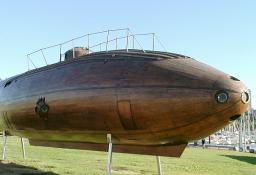 On 2 October 1864 the Ictineu II was put into operation: 14 meters long, built from olive wood with 2 millimetre thick copper sheathing. It was the first successful submarine with a combustion engine. A reproduction of the Ictineu II can be seen in the port of Barcelona.
On 2 October 1864 the Ictineu II was put into operation: 14 meters long, built from olive wood with 2 millimetre thick copper sheathing. It was the first successful submarine with a combustion engine. A reproduction of the Ictineu II can be seen in the port of Barcelona.
In the last few years the Rambla of Figueres was again given a major facelift, with new materials, but the space retains the spirit of the historic image. The typical sidewalk cafes and the Monturiol monument remained and the citizens and tourists were quickly able to embrace the new image. The major change to the Rambla – to close the side roads to vehicular traffic — and give the area back to pedestrians, was, alas, not possible. This aspect of the plan failed partly because the public refused to comply, and besides, without the Rambla pass through the city would have suffered from traffic chaos. Nevertheless the Rambla remains what it always was, the centre of Figueres and one of the Catalonia’s most historic Ramblas.

